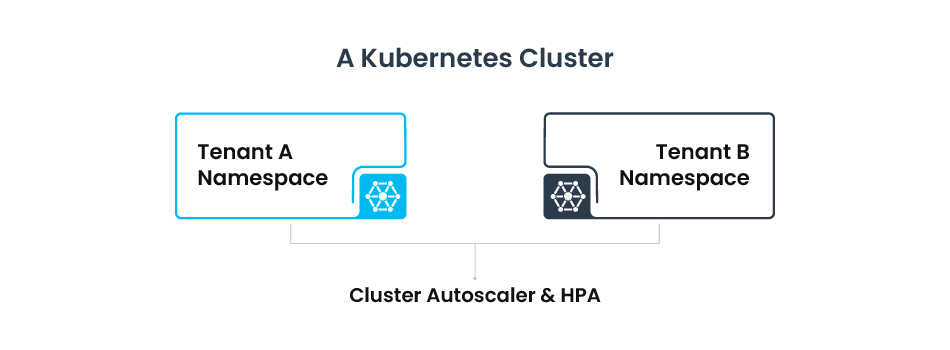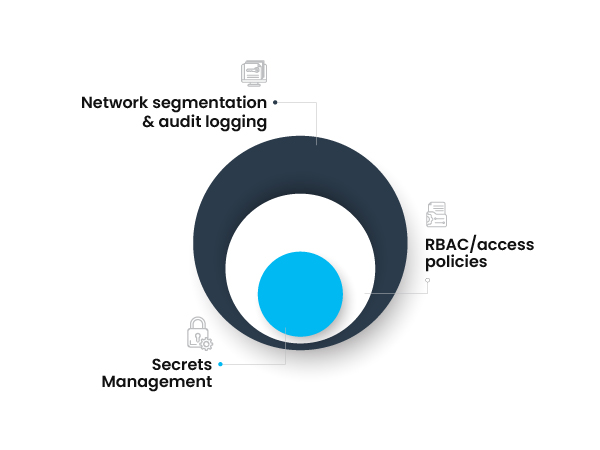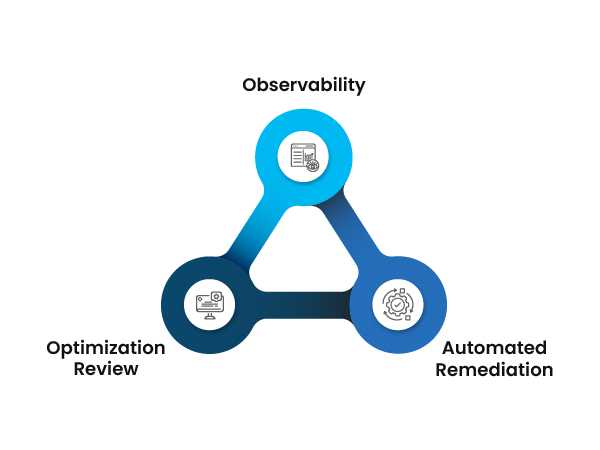Enterprises today face complex, hybrid technology environments and must deliver software reliably across them. Meeting rising expectations for speed, quality, and resilience demands consistency and portability. Containerization serves as a crucial enabler, offering lightweight, consistent, and portable environments. Kubernetes, in turn, has become the de facto standard for orchestrating these containerized workloads.
Kubernetes is an open-source platform designed to automate the deployment, scaling, and operation of containerized applications. It’s like the traffic cop for apps, ensuring containers are routed where they need to be, when they need to be, without congestion.
Containers and Kubernetes
Containers (such as Docker) package applications with all their dependencies, ensuring they run consistently across different environments. As enterprises scale, managing hundreds or thousands of containers becomes impossible with manual oversight. Enterprise Kubernetes steps in to orchestrate these containers, organizing them into pods, scheduling workloads, monitoring health, and self-healing failed containers. It acts like a hyper-efficient operations team that never sleeps, providing the consistency and reliability enterprises need at scale.
From Deployment to Business Impact
Through years of deploying Kubernetes at Scale for clients—from AdTech to airlines—we’ve learned that success isn’t just about creating clusters. It’s about building platforms that are reliable, secure, and aligned with business goals.
Let’s now explore practical insights from Cybage’s experience in designing scalable, secure, and business-aligned Kubernetes environments:
Lesson 1: Multi-Tenant Cluster Design

Enterprises often consolidate multiple business units or clients onto a shared Enterprise Kubernetes infrastructure. Without proper isolation and scaling, a single tenant’s workload surge can impact others, resulting in downtime, slowed adoption, or lost revenue.
Cybage designs clusters that protect tenants while enabling seamless growth:
- Secure Isolation with Namespaces and RBAC: Tenant-level boundaries prevent cross-tenant interference, reducing risk and operational friction.
- Dynamic Scaling and Resilience: HPA, Cluster Autoscaler, and Ingress Routing absorb workload spikes without overprovisioning.
- Deployment Strategy: On-prem suits compliance or low-latency needs, cloud offers elasticity and cost efficiency, and managed services like EKS/AKS offload control-plane management. These are choices which directly impact multi-tenant scaling, isolation, and resilience.
This approach ensures stable platforms, faster onboarding, and lower operational overhead, allowing enterprises to scale confidently.
Takeaway: Scaling multi-tenant Kubernetes platforms requires striking a balance between isolation, resilience, and operational efficiency.
Lesson 2: Security & Compliance Embedded Across Layers

In regulated industries, a single misconfigured secret or role can trigger compliance breaches, fines, and reputational damage.
To maintain platform reliability and protect sensitive data, we design Kubernetes environments with:
- Secrets Management Best Practices: Vaulted and encrypted credentials protect sensitive data and satisfy regulatory mandates, such as HIPAA, GDPR, and SOC 2.
- Granular Access Control: RBAC integrated with corporate identity providers enforces consistent global access policies.
- Tenant and Compliance Isolation: Network segmentation and audit logging prevent cross-tenant leaks and satisfy compliance audits.
With these measures, clients experience reduced operational risk and strengthened trust with regulators and customers.
Takeaway: Security and compliance must be embedded into Kubernetes Architecture from the outset to ensure risks are mitigated without affecting performance.
Lesson 3: Automation, Observability & Governance for Operational Efficiency

At scale, manual deployments and fragmented monitoring increase risk and slow response times. Delays in issue detection or misconfigurations can lead to service interruptions and lost revenue.
Cybage ensures issues are detected and resolved quickly, and operations remain predictable through:
- Accelerated CI/CD Pipelines: Automated pipelines with embedded security and compliance checks shrink release cycles from weeks to hours.
- Centralized Observability Stack: Prometheus, Grafana, and ELK provide a unified view, cutting MTTR by 40%.
- Continuous Governance via Policy-as-Code: Automated guardrails ensure compliance and reduce manual overhead.
This allows enterprises to operate reliably at scale while accelerating innovation.
Takeaway: Automation, unified observability, and policy-driven governance reduce operational risk, improve predictability, and support scalable growth.
Lesson 4: Translating Architecture to Business Outcomes

Technical design choices have a direct impact on costs, performance, and revenue. Overprovisioned clusters inflate cloud bills; latency harms user experience; weak disaster recovery risks business continuity.
We design Kubernetes platforms with business outcomes in mind by building in:
- Cost Optimization (Kubernetes FinOps): Rightsizing workloads and leveraging spot instances generate significant cloud savings.
- High Platform Responsiveness: Latency reductions enhance conversion rates and improve the customer experience.
- Robust Backup and Disaster Recovery (DR): Multi-region failover ensures continuity in the event of disruptions.
This ensures enterprises see measurable cost savings, better user experience, and minimal disruption during outages, making Kubernetes a strategic enabler rather than a cost center.
Takeaway: Kubernetes architecture must explicitly align with business outcomes, linking technical efficiency to financial and operational performance.
Lesson 5: Continuous Improvement and Feedback Loops

Business priorities shift, workloads grow, and customer expectations evolve. Static platforms deteriorate over time, resulting in increased costs and operational friction.
Cybage builds Kubernetes platforms that evolve with the business:
- Centralized Observability Driving Action: Metrics and logs feed automated workflows for proactive issue resolution.
- Automated Remediation Kubernetes: Kubernetes Operators reduce manual interventions by over 60%, freeing teams for innovation.
- Iterative Optimization: Quarterly reviews realign performance, economics, and scaling with evolving business needs.
This approach enables platforms to evolve in tandem with the enterprise, maintaining cost control and seamless scalability.
Takeaway: Continuous feedback and iterative optimization are essential for maintaining platform efficiency, performance, and alignment with business growth.
Bridging Technical Design and Enterprise Agility
Cybage’s real-world Kubernetes at Scale deployments demonstrate that technical rigor and business outcomes are closely intertwined. By integrating best practices, Cybage builds platforms that are resilient and adaptable, aligning with strategic business goals.
With a unique blend of technical expertise, data-driven governance, and deep industry insights, Cybage transforms Enterprise Kubernetes environments into strategic assets. These platforms enable enterprises to scale seamlessly, ensuring long-term adaptability in fast-moving markets. Contact us today!











